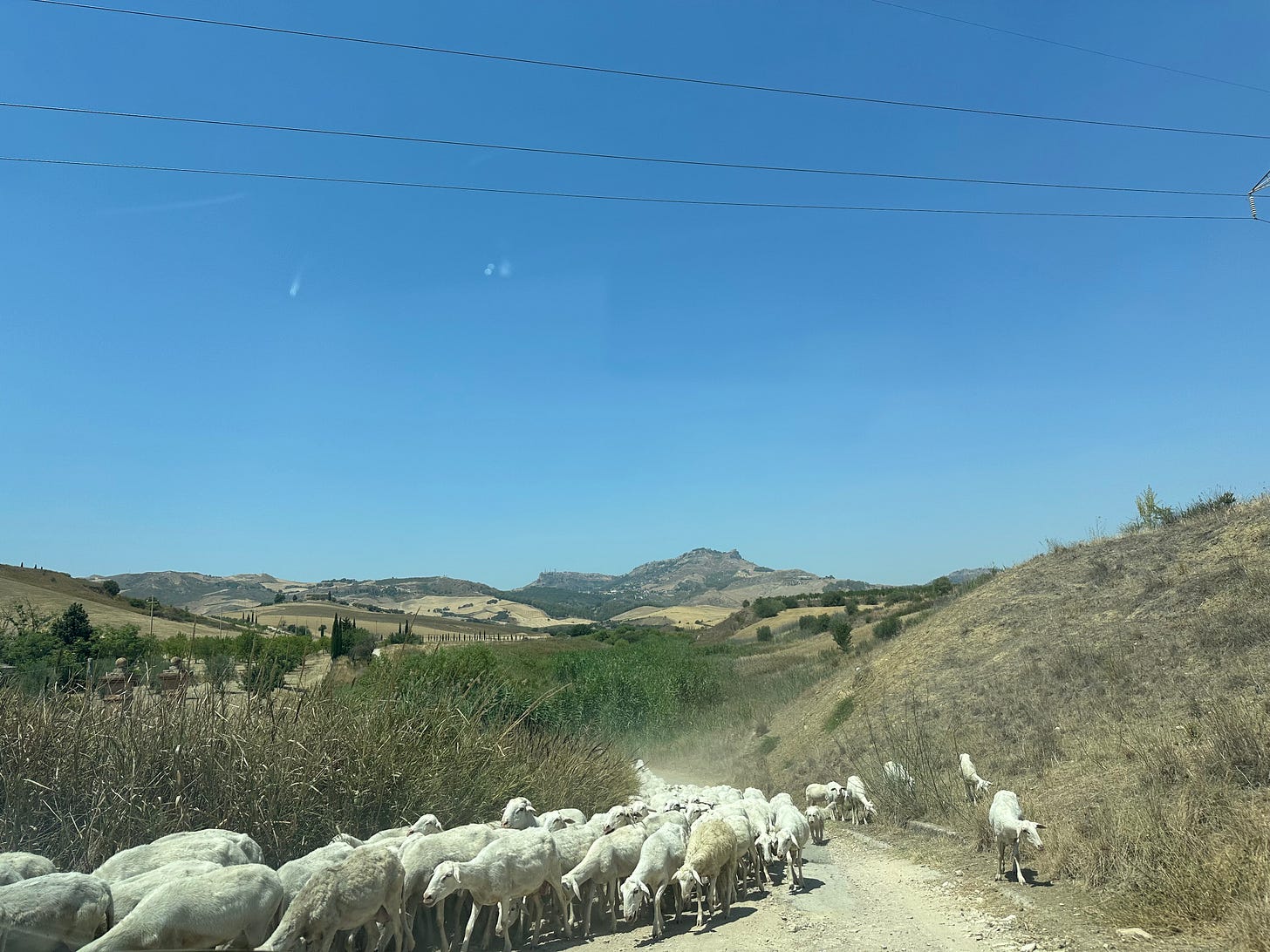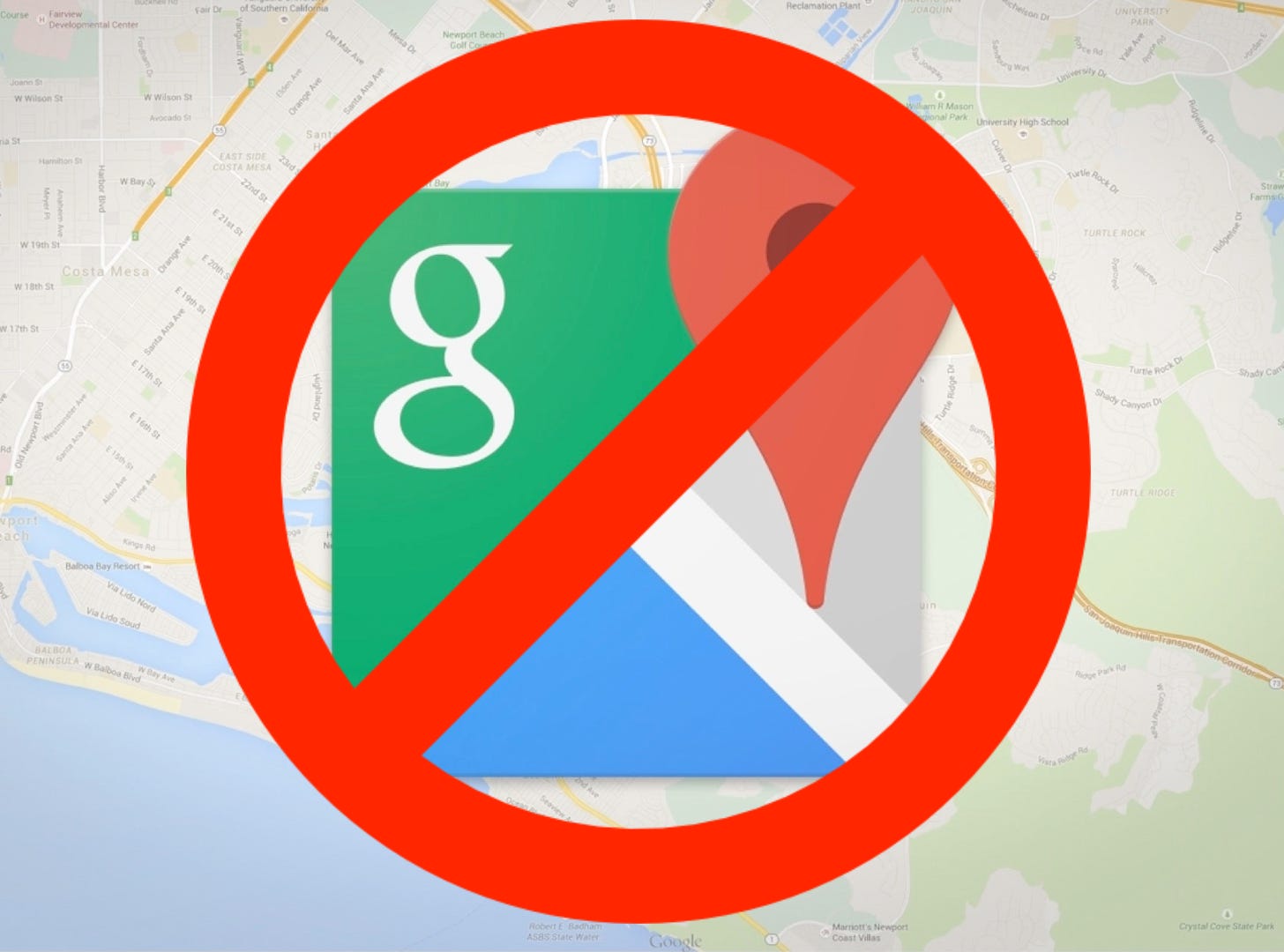You can't trust Google Maps
Or how a holiday has shown me the failings of navigation apps
I’ve spent the past two weeks in Sicily — I know, it’s a hard life — but in that time I’ve come to a conclusion: navigation apps can’t be trusted.
Obvious? Uh, yeah. That’s the hook. To get you involved. I know it’s akin to saying, “hey, this Facebook company might not have my best interests at heart,” but that doesn’t stop it being true.
Like many of you, I grew up in an era that spanned physical and digital maps. The earliest journeys with my folks were done using A-to-Zs and actual, physical maps. You know, the fold-out ones you see in old movies. In the early 2000s I became aware of online directions, services where you’d plug your destination in, print off the instructions, and follow them. And eventually? We arrived at smartphones and navigation apps like Google Maps and Waze.
I don’t think I’m alone in saying this completely changed how I interact with the world. Whenever I need to go somewhere, explore a new place, or find a recommendation, I’m likely to turn to Google Maps for an answer.
I’ve always had a slight reticence about my reliance on the software, but, overall, it worked well. It was convenient. Yeah, you sometimes might not absorb your surroundings and walk around locked into mobile screen, but it made moving through the world easy.
Yet, my Sicily trip has blasted apart my trust in the software. Let me explain.
Last Friday, we headed to Palermo (Sicily’s capital) from Linguaglossa, a town on the eastern side of island. On the way, we stopped at an olive oil press in a place called Enna.
From here, we checked our route on both Google Maps and Waze, which warned us that the main highway to Palermo was closed. Trusting them innately, we set off on our merry way down some backroads.
This is where things started going awry.
Sicily is a very hilly place. If you’ve ever seen The Godfather, it’s a pretty accurate depiction; lots of single track lanes winding around steep, yellow mountainsides. We followed the navigation apps, and after 30 minutes of driving, they dropped us off at a closed road. We turned around, drove another 20 minutes or so, and encountered another shuttered lane.
“Okay,” we thought, “this is just a blip. A funny little Sicilian quirk.” We plugged in a new route and this is where things started to go downhill — figuratively and metaphorically.
We drove down an increasingly narrow and desolate road. The tarmac disappeared, replaced by lose stones. It got steeper. The track turned into potholed grass and dirt. Huge rocks reared out of the earth.
A scrape. A crunch. A crash.
We were marooned in the boiling sun. The car wouldn’t move, its tyres skidding and screeching against rock and dirt, the clutch smelling like burning rubber. We were stuck.
And it was all Google Maps’ fault.
After a lot of cursing, pushing, and manoeuvring, we managed to get the car back onto something resembling a regular road. Tails between our legs, we drove an hour back to Enna, the town where we’d done the olive oil tour. We were basically back where we started.
There was lots of discussion about what to do next, how to get to Palermo, and a novel idea came up: why not follow the road signs?
We followed one pointing us towards the capital and — SHOCK! HORROR! — we got on a highway that Google Maps had deemed closed and headed straight to the city. With no issues whatsoever. It was easy, efficient, and stress-free, navigations apps be damned.
Before we go on, a clarification.
When I said our minor accident was Google Maps’ fault, that wasn’t fair. It was our fault. Why? Because we wholeheartedly trusted navigation apps.
A side effect of the smartphonification of society is we increasingly experience our life through screens. Consider this: have you ever been in a situation where you’ve seen a beautiful landscape or watched something funny happening and your first thought is, “how can I take a picture of this for Instagram?”
I think we’ve all been there.
Rather than enjoying a moment entirely, we’re angled to observe it through our phones. And the same thing has happened with navigation.
Many of us now move through the world digitally, with a screen between us and reality. Instead of following road signs, for example, we rely on technology to direct us.
There’s nothing innately wrong with using Waze or Google Maps as long as we view them as a tool, as a jigsaw piece, not the arbiters of truth. Yet this isn’t how they’re used. For many of us, navigation apps have replaced knowledge and experience.
This, I believe, isn’t entirely our fault. It’s exactly what tech companies want. Fundamentally, they make money from our attention — it’s why they persist with AR and VR — and Google Maps is a prime way of doing it.
The existence of this software is all about warping our perspectives. Reality, Google Maps implies, is what the company says it is. The best way to move through the city? The best restaurants? The fastest routes? This is decided by an all powerful algorithm, a god-like figure overflowing convenience and omniscience. Don’t worry, it seems to say, sit back, turn off, tune out, I’ve got this.
This ruins a key part of the human experience, the idea of taste, of preference, of experience — and actually living in the world and taking in the moments that surround us. Sometimes you just like travelling down a certain road. Sometimes it’s nice to get a recommendation from a friend. Sometimes the best route is clearly labelled on a signpost.
The key — and something that’s easier on paper than in reality — is to reposition the technology we use day to day. It’s not an all-knowing source of truth. It’s a tool. A drill doesn’t tell you the best place to hang a painting, it simply gives you the ability to put up a piece of art wherever you want. This is how we need to think of technology in general.
And the sooner we can get to this state? Well, the less likely we’ll be to end up in a Sicilian ditch. Figuratively and metaphorically.





Google Maps is also pretty terrible for many locations/routes in the mainland USA just a few miles from a Google campus where they write this software. Italy has no monopoly on that.
Google Maps says it's the best way to get around the city?
Does it give you the fastest routes?
Well, anyone who believes that is simply an idiot. A naive person to be politically correct.
I also went through it with my family on a pseudo-uphill road in the Nebrodi mountain range in Sicily with the car, whose width was exactly the same as the width of my car, and I didn't have 10 centimeters to maneuver, .. I ruined the car a bit. I had a fear that I had never had.
My wife wanted to sue Google.
The point is that digital technology, in the case of roads to be traveled by car, cannot replace human common sense. Once upon a time with maps we got lost and asked people and still we arrived at the destination, but the important, the magical thing was the route and not the destination. The route became the story to tell.
Today, however, we get pissed off if Maps takes us to places that are impracticable by car.
But no doctor prescribed Maps for us!
From my experience I have learned that in the internal and impervious areas I do not use Maps, I use old maps and above all I ask the people who invite me to their homes to taste their dishes.
FuckMaps